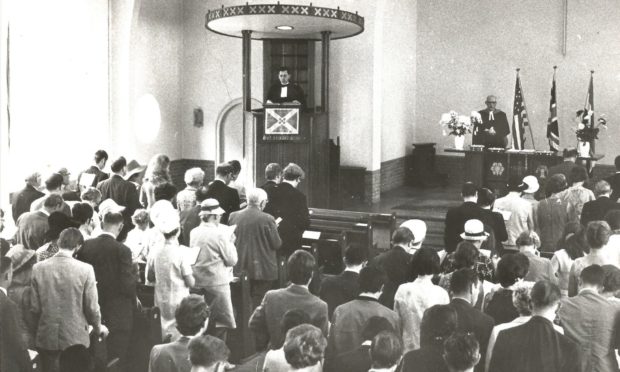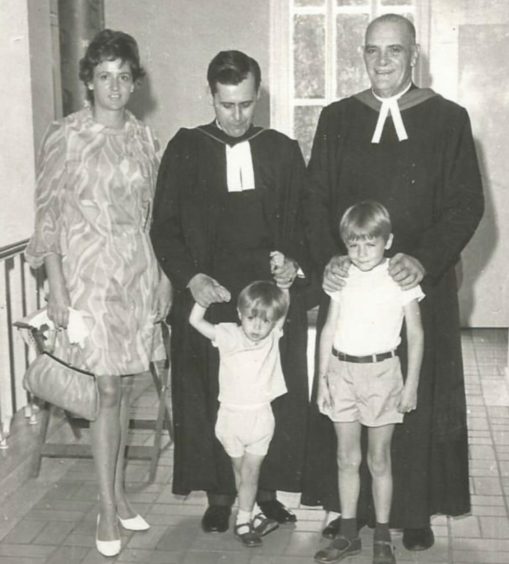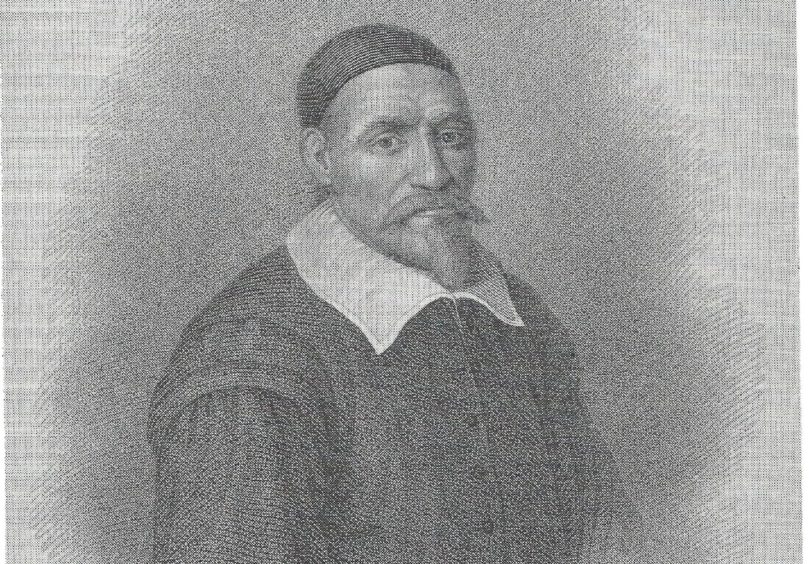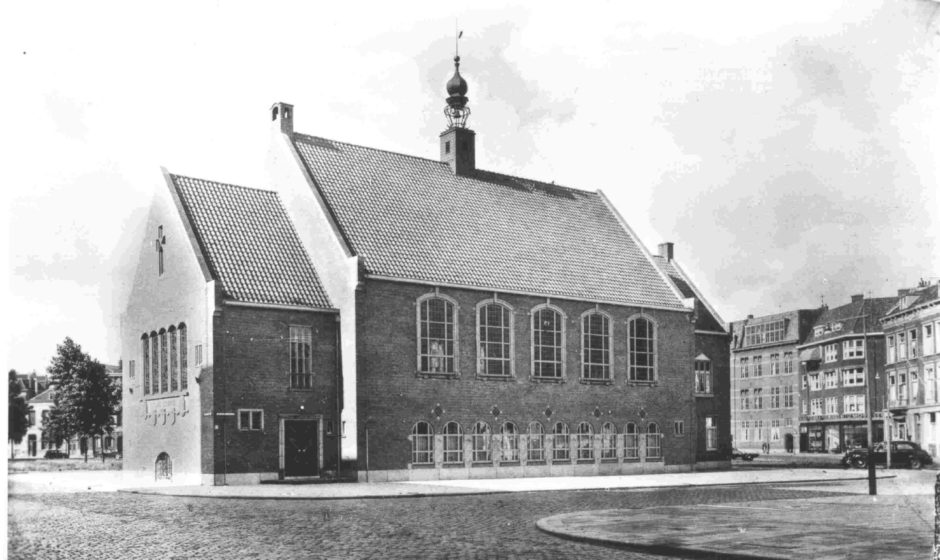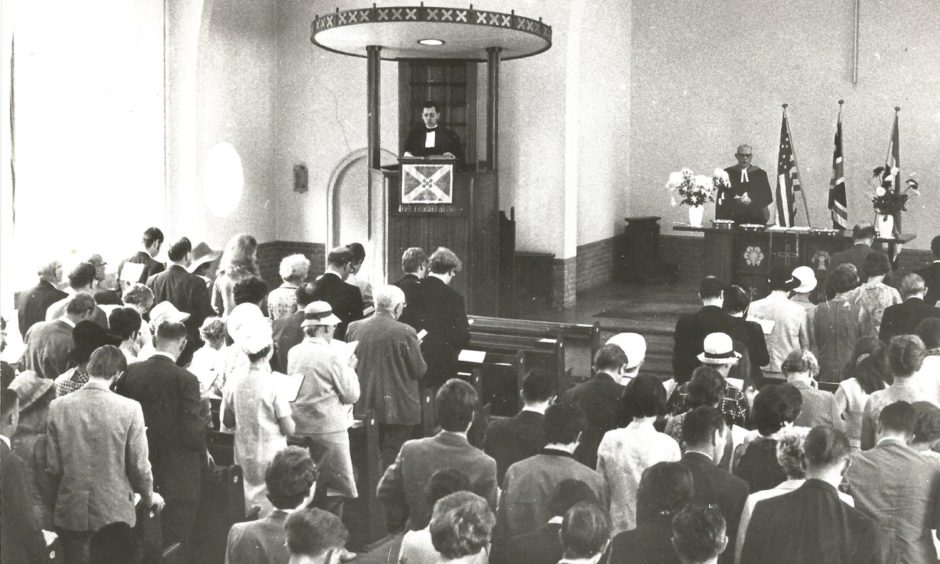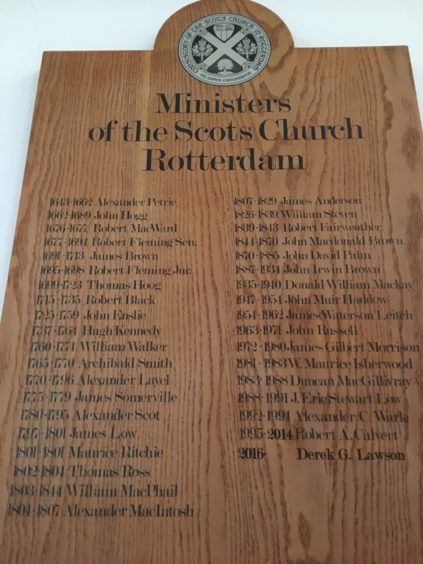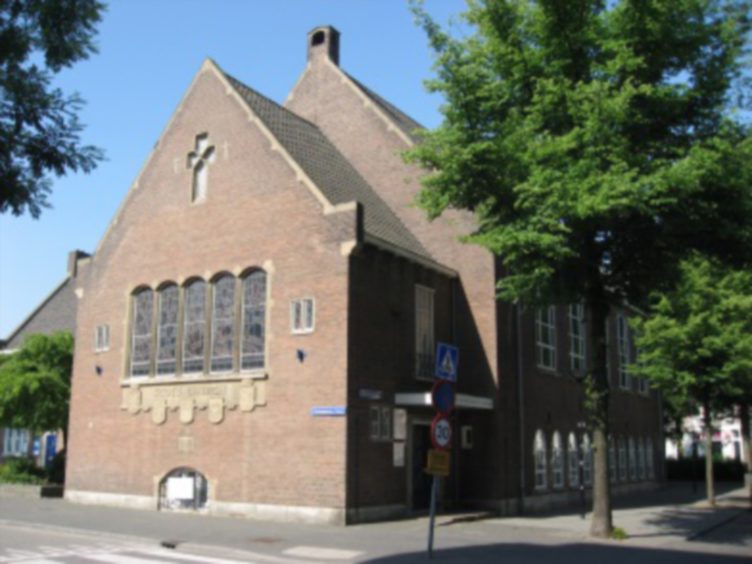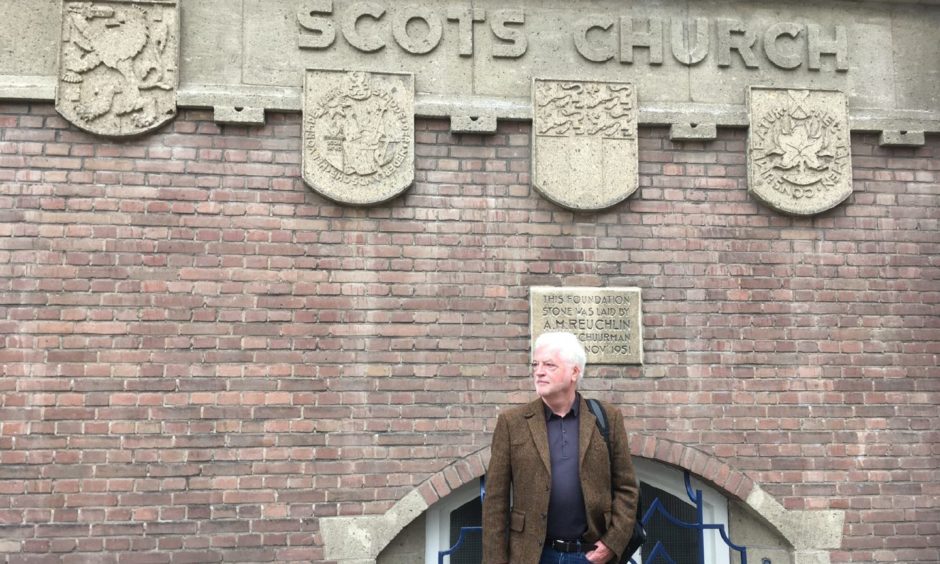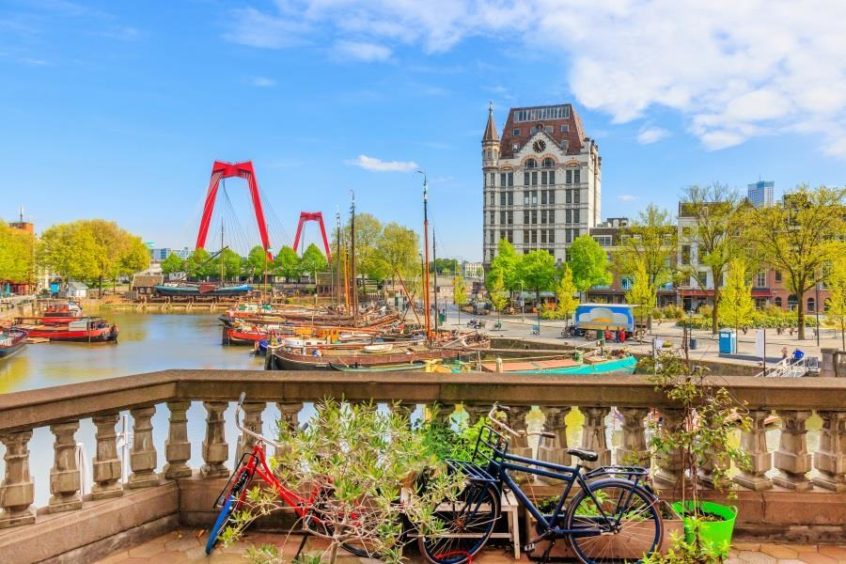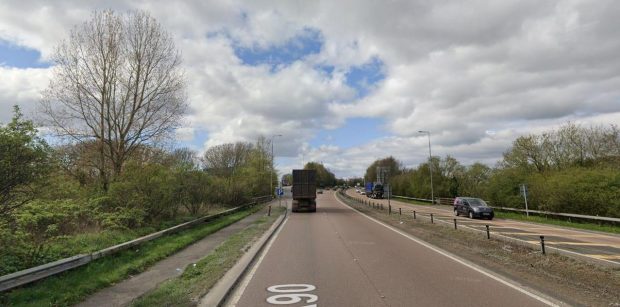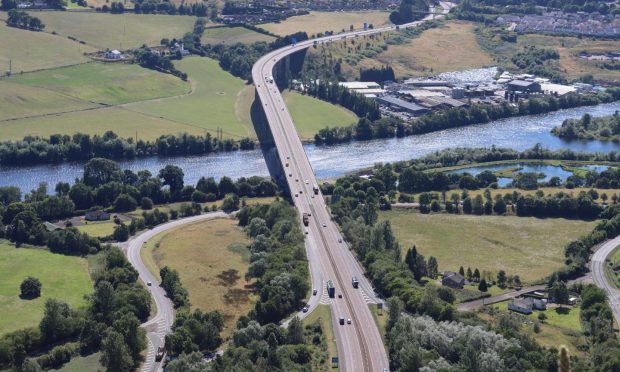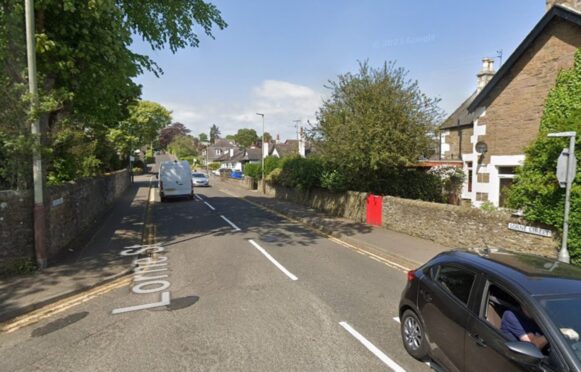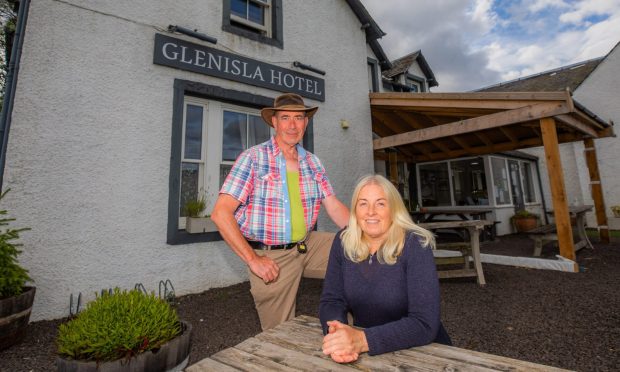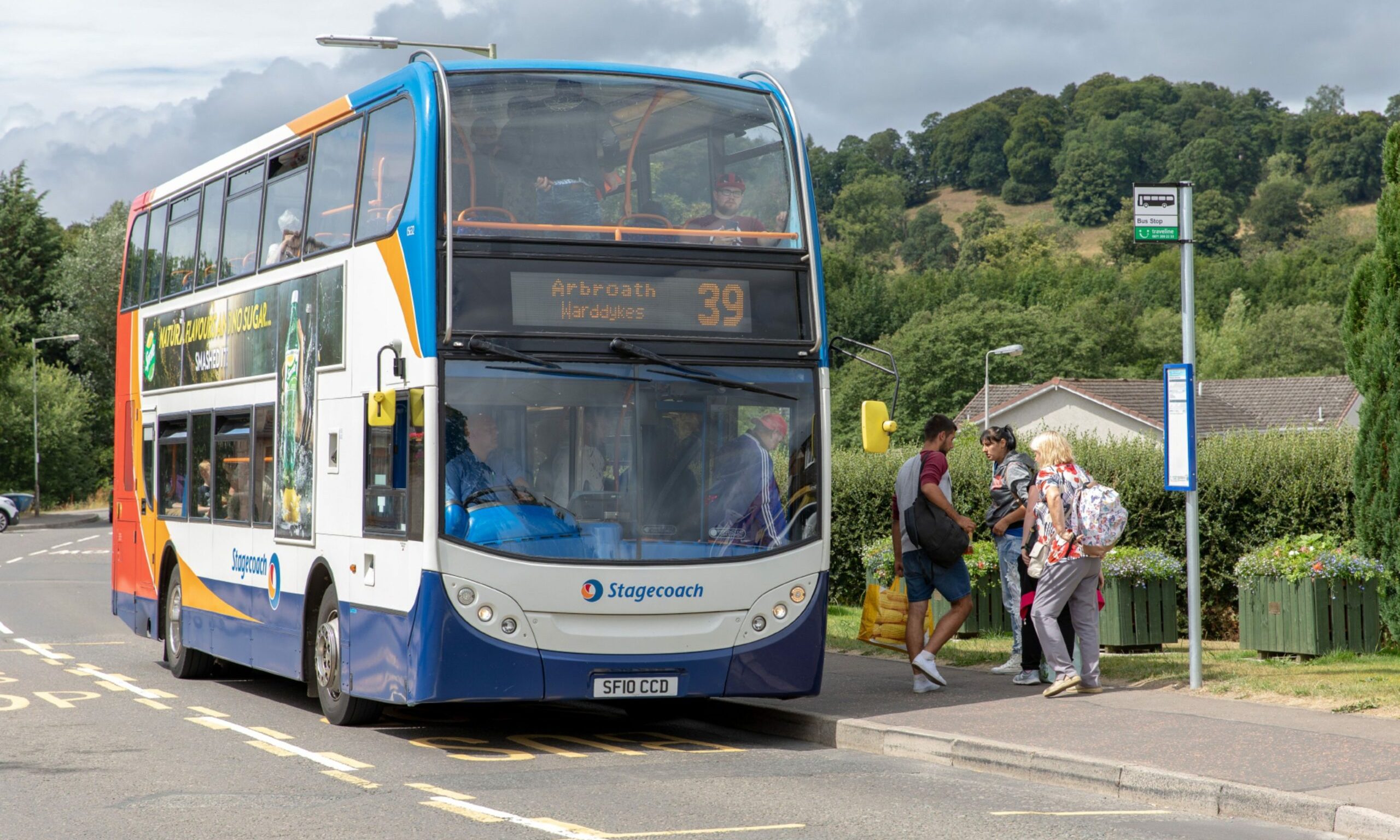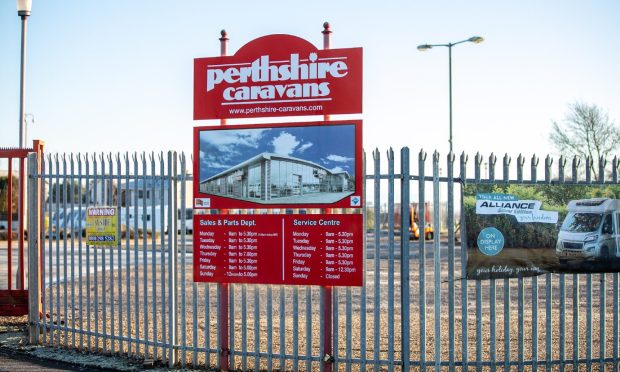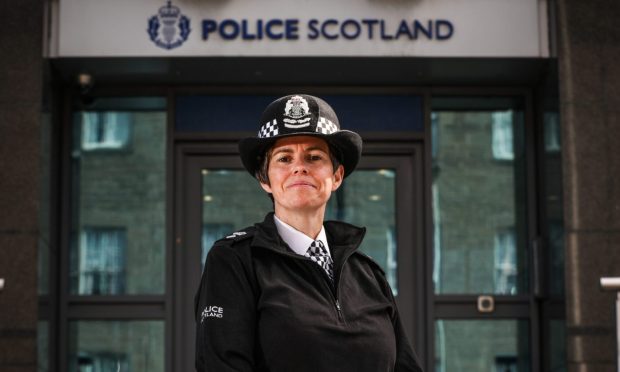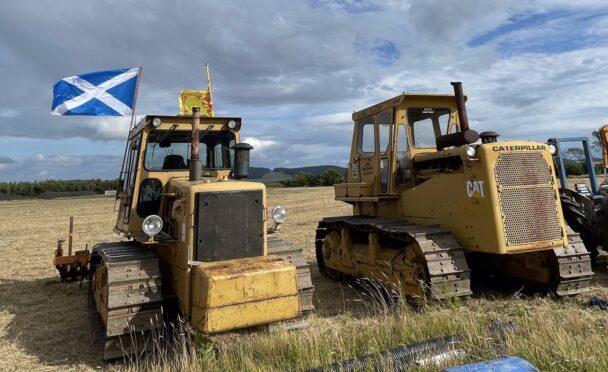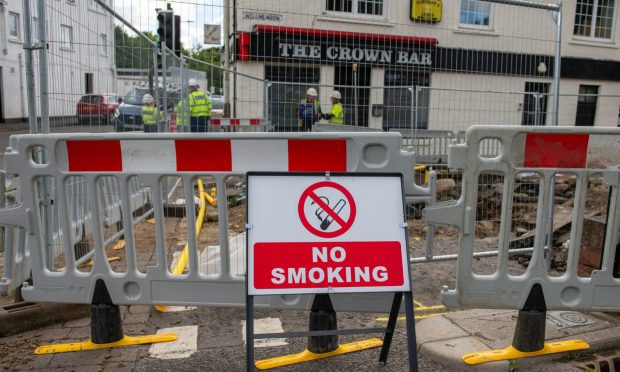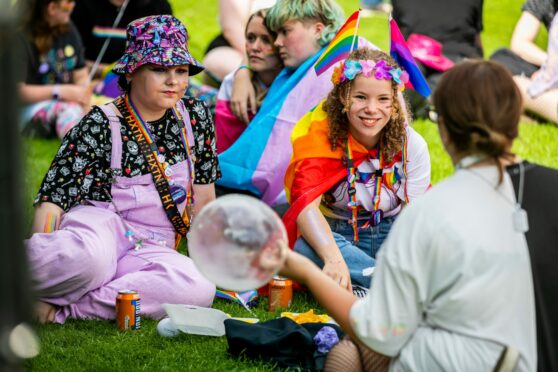Michael Alexander speaks to Rev John Russell about the history of the Scots Kirk in Rotterdam and the nine years he spent as minister there with a truly international congregation.
He is the globe-trotting kirk minister who recently celebrated 60 years since his ordination with a service in Perthshire.
But having been brought up in India and having worked in Germany, Scotland, Canada and Holland, the Rev John Russell will always have a special affinity with the Scots International Church in Rotterdam where he was minister for nine years.
The memories came flooding back for Mr Russell when he read a recent Courier feature about Newport-based broadcaster Billy Kay’s exploration of Scotland’s centuries-old relationships with the Low Countries of Europe.
Mr Russell, who has been the Presbytery Clerk of Dunkeld and Meigle since 2001, was first ordained by the United Church of Canada in Ontario in May 1959.
Having learnt Hindustani whilst living in Mumbai as a child, he went on to be the minister of the Scots Kirk in Rotterdam from 1963 to 1972.
“My wife Sheila and I went there when we were married and our two sons were born there,” says Mr Russell. “It was that awful winter of 1963.
“With my background, being in an international church in Rotterdam, it was great because you were meeting people from all over the world – you felt quite at home with people from all over the world. It was a great time to be! We remain very fond of Holland.”
History of the Scots Kirk in Rotterdam
The church, which first opened in 1643 for the many Scottish merchants, sailors and soldiers who lived in the city, has strong links to Perthshire as its first minister Alexander Petrie was recruited from Rhynd.
The kirk’s congregation even carried on after it was destroyed by Nazi bombs during the Second World War – latter being rebuilt.
However, its history is firmly rooted in the wider history, religion, politics and economics of the 16th and 17th centuries.
Mr Russell explained how in the 15th and 16th centuries, travel to the continent from Scotland was easier than travel to England.
A Scottish Trading settlement was established at Veere (Campvere) in the Netherlands.
It was effectively part of Scotland and in 1587 a Protestant pastor was appointed by the Royal Boroughs of Scotland.
Quoting from the Hilton Holland Magazine of August 1965, Mr Russell explained how the Scots Church congregation was originally formed, in 1643, for the convenience of the numerous Scots merchants and seamen who lived and traded among the Dutch in Rotterdam during the 17th century.
Founded during the civil war between Charles I and Oliver Cromwell in a country where the Reformation was secure, the congregation had only been in existence a short time when the British monarchy was restored in 1660.
For 28 years, until the accession of William of Orange to the British throne in 1689, the monarchy attempted to bring the Church of Scotland under state control.
Many Presbyterians were forced to flee Scotland, and they took refuge with the Rotterdam congregation.
The church was originally a house in the Wijnstraat and four silver communion cups were provided by the magistrates.
Later the congregation moved to the St Sebastian’s Chapel, the chapel of the Society of Crossbowmen.
Who were the Covenanters?
The fugitives, called Covenanters because they were “covenanted” to maintain Presbyterianism in Scotland, came crowding in to Rotterdam in such vast numbers that a gallery had to be built in the chapel for the overflow, and a second minister called.
Some of the banished Scots returned home in 1689, but many stayed in Holland with their families.
In addition the congregation had been augmented over the years by members of the “Scottish Brigade” serving in Holland, and was to continue to be added to until the time of the American Revolution when it was disbanded.
The Brigade was sent to the Netherlands by Elizabeth I in 1572 (along with English soldiers, later withdrawn) to help the Dutch fight the Spanish, England’s and Holland’s ancient enemy.
Stationed in the southern part of the countrv, the troops naturally were drawn to the church, a centre of Scottish influence, and even supported the “Scotch poorhouse” maintained for invalids and the needy.
By 1697 the exiles, merchants, sailors, soldiers and their families numbered about 1000 persons, and it was decided to build a permanent Scots Church.
This building, erected on the Vasteland with foundation stones brought across from the Forth area of Scotland, was in existence until 1940, when it, along with much of downtown Rotterdam, was destroyed by German bombs.
The present building, at 119 Schiedamse Vest near the Central Station, dates from 1952 and was built with funds collected both in Rotterdam and in Scotland from individuals and organisations interested in the welfare of the church.
It was dedicated by the then-Moderator the Rt Rev Johnstone Jeffrey in 1952.
Not parochial in any sense, it attracted people of all nationalities including Dutch people who preferred the simplicity of the service, or who were married to English citizens.
Of course, there were always temporary additions to the congregation with businessmen passing through.
Though the congregation changed, the 1960s report told how the fundamental Scottish character of the church had been retained.
A service at the Scots International Church in 1970 marked 350 years since the Pilgrim Fathers’ departure from the Netherlands, and Rev John Russell was in the pulpit.
A challenging role
Mr Russell recalls how as a young minister in 1965, he found challenging the special problems of his peculiarly constituted congregation, and welcomed the opportunity to minister to the US government console temporarily assigned to Rotterdam, as well as the Dutch husband and English wife who had become permanent members of the congregation.
He was assisting the American-Netherlands Club of Rotterdam by providing a room on the church premises for their thrift shop, and had encouraged activities of the local British Women’s Club.
In his then 2.5 years in Rotterdam, he had thoroughly familiarized himself with the church’s history and traditions by studying in its extensive archives.
These documents, which date back to the first Minutes of the Consistory in 1643, along with the original silver communion cups and baptismal basin, were rescued from the strong-room of the bombed church in 1940.
Parishioners, determined to save some, at least, of the church’s relics, got to the site right after the raid and found that there was nothing left of the church except the precious relics and ancient records which were intact in an underground vault.
The nose cone of a bomb was also discovered, and it had been mounted on a pedestal to double as a collection box, and a reminder of that period during World War Two when it was impossible to meet for worship.
One record written in 1776, the year the American Revolution began, noted that a certain pension would continue to be distributed only upon “condition of (the recipient’s) better behaviour. . .”.
The silver communion cups were also a strong link with the past.
Presented by the City Council of Rotterdam in the 17th century, they recalled the period during which the Dutch States General and Rotterdam City Magistrates guaranteed the salaries of the Scots Church ministers, even while war was being waged between Great Britain and Holland.
Andrew Munro, a descendant of a member of the Scottish Brigade, presented the baptismal basin to the church in the early 19th century.
Munro, who had been appointed official architect for the City of Rotterdam, was typical of the long line of Scots-descended Dutchmen who had contributed to the growth of the Netherlands.
“I was inducted as the 30th Minister of the Scots Church Rotterdam – appointed by the Church of Scotland and then inducted by the Dutch Reformed Church,” says Mr Russell.
“Permission was granted by the Dutch Queen Juliana to be Minister.
“In my time the congregation had over 200 members – all nationalities – Dutch married to Scots or English, Americans, Commonwealth, Swiss, a Copt from Khartoum, an Irish KLM pilot from Dublin.
“By the 1960’s many of the Dutch members were in senior positions. I had the Commander in Chief of the Dutch Navy as a member.
“One time, a naval chaplain was ordered to take my Sunday service so that I could have a holiday!
“The congregation became truly multinational, a tradition that has continued throughout successive ministries.
“During the Second World War the Dutch Navy submarines were based in Scottish ports and many Dutch sailors married Scots and the congregation had a good Dutch membership as these Scots women brought their Dutch husbands into the Scots Church.
“Another interesting link is this. Alexander Petrie the first Minister came from the Parish of Rhynd in the Presbytery of Perth and a former minister, the Reverend Derek Lawson, was clerk to the Presbytery of Perth and I am clerk to the Presbytery of Dunkeld and Meigle also in Perthshire!
“A tale of friendship across the North Sea if ever there was one!”
